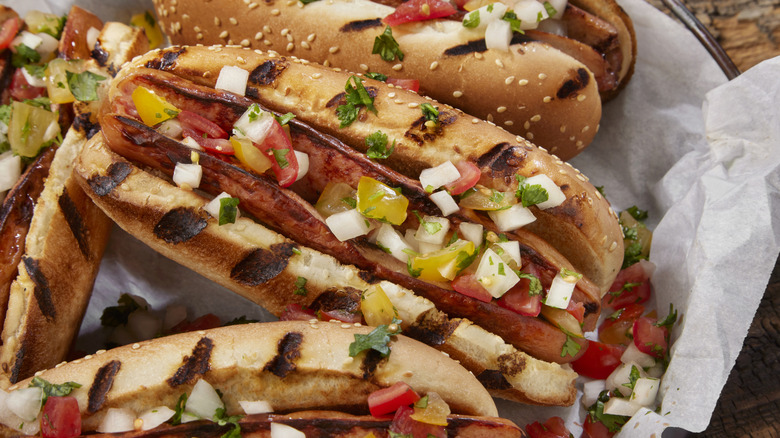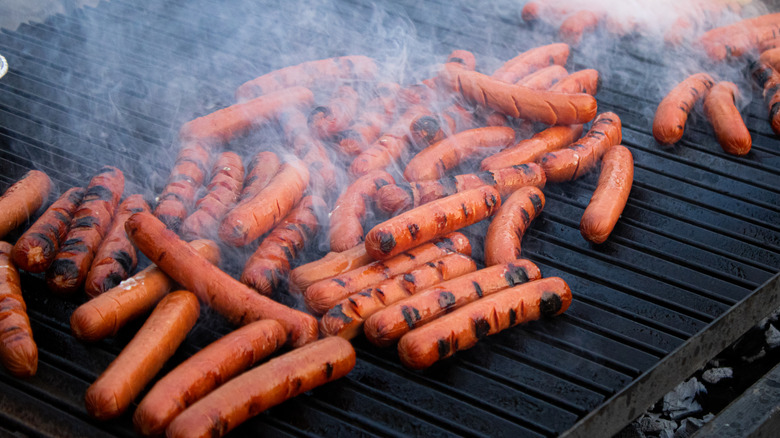The Mistake To Avoid When Butterflying Your Hot Dogs
Barring brats and ultra-fancy brands, most hot dogs are cheap, mystery-meat sausages with a synthetic casing that could use a textural upgrade and added depth of flavor. That's where butterflying comes into play. As its name implies, butterflying involves creating a vertical slit down the center of the hot dog, so its flesh opens up like the wings of a butterfly, incurring both the crispy charred texture and smoky flavor from the grill. A butterflied hot dog creates a better all-around flavor experience with a larger flatter surface area to garnish with toppings and condiments. However, exposing the entirety of its flesh might result in a dried-out or burnt hot dog. So, to avoid the risk of overexposure when splitting your hot dogs, you should make smaller, horizontal slits along the dog.
Instead of one long vertical slit or a fancy spiral slit, try making a few, evenly spaced cuts across the width of your hot dogs. This scaled-back slicing style will help your hot dogs crisp up on the grill and infuse with smokiness without drying out. A standard six-inch long hot dog needs no more than four evenly spaced slits to create crispy surfaces while still retaining a juicy, chewy, and umami-rich interior. These slits will still reduce cooking times on the grill, so vigilance is a must. Hot dogs only need a mere minute on each side to get nice and crispy.
More simple hot dog tips for the tastiest outcomes
The flavor and texture benefits may outweigh the risk of drying out when it comes to splitting your hot dogs, but there are a few measures you can take to rule out the risks entirely. First choose hot dogs with a higher fat content; all-beef franks tend to have more fat than pork hot dogs. A fattier sausage will maintain its juiciness over the high temperatures of a grill, especially when split.
You can further safeguard split hot dogs from drying or burning by simmering them for a few minutes. This will saturate the hot dogs with liquid that'll evaporate over the grill. Instead of relying on their fat content alone to keep them juicy, this extra liquid ensures that they retain moisture and flavor. A pro tip is a beer bath simmer (one of our 12 tips for cooking better hot dogs), resulting in a trifecta of sweet, bitter, and savory notes.
Another key to the crispy and tender texture contrast you crave with grilled hot dogs is getting the right grill temperature. Take the time to preheat your grill, checking that the temperature is between 400 and 425 degrees Fahrenheit before throwing your dogs on. Another common hot dog mistake that can sabotage a crisp crust is forgetting to oil the grill grates. Without a bit of oil, your hot dogs are likely to stick to the hot grates which will snag all the charred goodness with every rotation.

